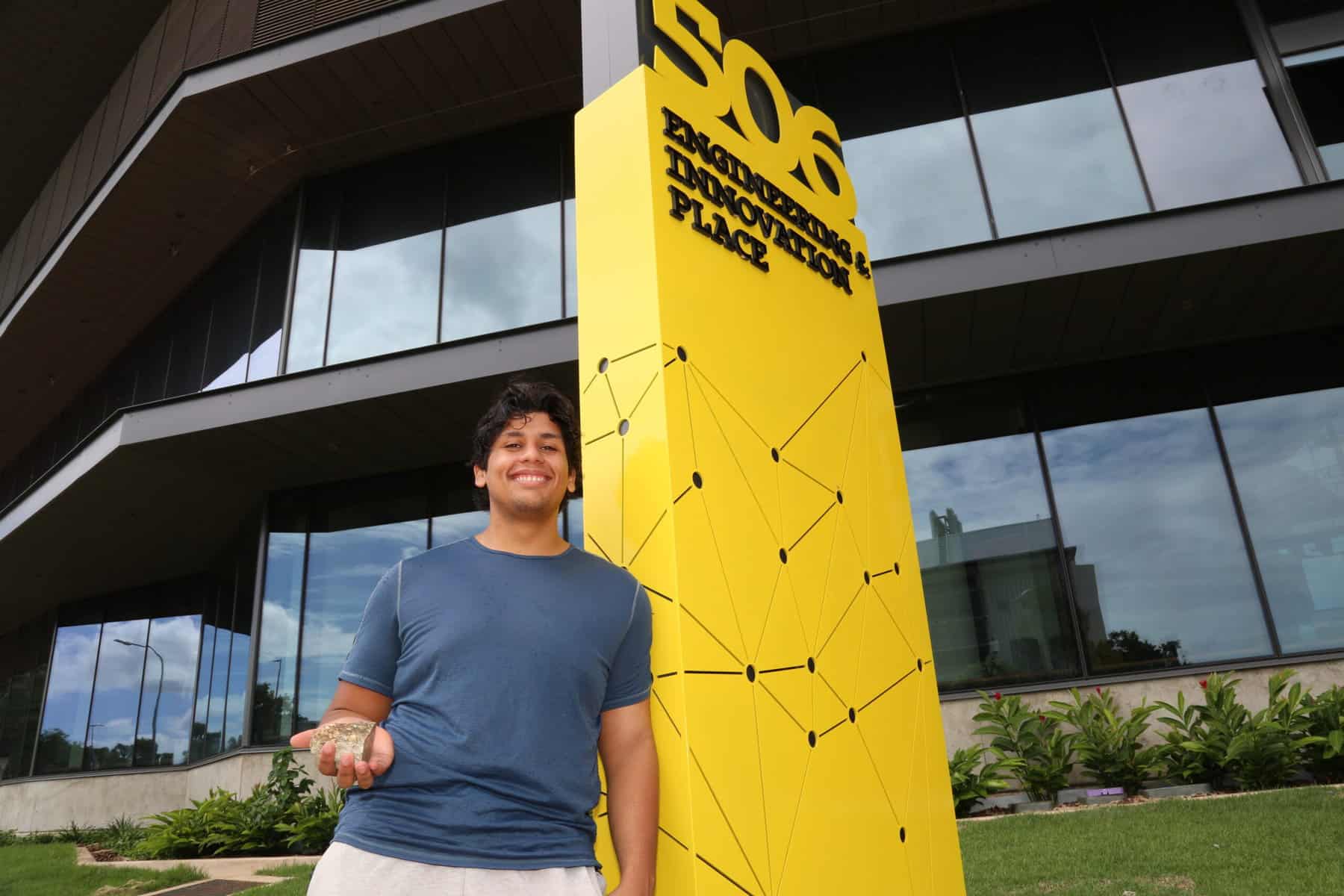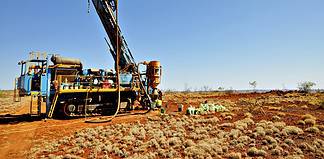Image: Fortescue Metals Group.
BY ELIZABETH FABRI
WHILE iron ore prices are set to slump in the coming years, Australia’s big four players – BHP, Rio Tinto, FMG and Hancock Prospecting – remain confident, pouring capital into new projects to sustain and bolster production post-2020.
IRON ore exports hit a new record in FY18, reaching an impressive 849 million tonnes; up 3.8 per cent from the previous year.
This number is forecast to rise again, increasing by a further 2.3 per cent to 869mt in FY19, and up to 878mt in FY20, according to the September instalment of the Resources and Energy Quarterly report.
The higher export volumes will be brought on by continued efficiencies across the majors’ operations including the introduction of autonomous trains and driverless trucks, together with expansions and additions.
Rio Tinto has already increased output across its Pilbara operations following the opening of its Silvergrass mine in 2017, with plans to grow this to 360mtpa by the end of 2019.
BHP too was expected to expand capacity at the Port Hedland operations, with a projected output of 290mt by mid-2019.
While production and export volumes out of Australia remain robust, the outlook for iron ore prices in the coming years wasn’t as rosy.
Lower prices in FY18 led to a 2.2 per cent drop in export earnings to $61 billion, which was expected to drop further to $56 billion in 2019-20.
The free on board (FOB) Australia iron ore price (62 per cent) decreased 13 per cent year-on-year in the September quarter to an average of about $US56 per tonne.
And while the spot price for benchmark 62 per cent fines saw some improvement in October, rallying to $US70.39/t – its highest level in seven months.
Department forecasts predict average FOB prices to fall to $US52/t in 2019, and $US51/t in 2020 due to weakening demand, with an expected decline in steel production in China and an increasingly well-supplied seaborne market.
“High steel prices, and China’s ongoing government push to improve air quality through increasingly stringent air pollution policies, are expected to maintain the price premium for high-grade iron ore and discounts for impurities contained in iron ore, namely alumina and silica,” the Resources and Energy Quarterly report stated.
“Upcoming winter production cuts are expected to have a greater impact on Chinese steelmakers then they did in the same period last year.”
The tumble in prices, however, was not comparable to the 2015 period when prices sank below $US40.
And Australia’s iron ore majors still have a consensus positive outlook for the long-term.
Pilbara Producers
Representatives from Rio, FMG, BHP, and Roy Hill met with customers at the Chinese port city Dalian in September to discuss business during the China International Steel and Raw Materials conference.
FMG’s new chief Elizabeth Gaines said the Chinese steel industry had been stronger than anticipated this year, with another promising year ahead, despite growing trade tensions between the US and China.
“The sense we are getting from our customers is that they are fairly confident in the sector,” Ms Gaines told The Australian.
FMG – which had been a victim of the widening gap between higher and lower grade ore – intended to produce a higher-grade 60 per cent product, which it will begin shipping at the end of the calendar year at an initial annual rate of between 10mt and 15mt.
Its $US1.275 billion Eliwana project – approved by the board in May – will also produce a 60 per cent iron ore grade, when it opens in December 2020.
Construction was set to begin on the project soon, which will have annual production of 30mtpa with capacity for up to 50mtpa.
BHP has also made headlines with the approval of its mammoth $US3.4 billion South Flank project in June.
South Flank – which has a 25 year mine life – will sustain group production as the 80mtpa Yandi mine winds up post 2021.
Rio has also reinforced the importance of iron ore in its portfolio, recently completing an exit from coal.
A decision was imminent on Rio’s Koodaideri project, which was set to replace depleting resources in the Pilbara from 2021.
Furthermore, Rio and partners Mitsui & Co, and Nippon Steel & Sumitomo Metal announced in October they will invest about $1.55 billion (Rio’s 53 per cent share was $820m) to maintain production capacity at two iron ore projects at the Robe River Joint Venture in the Pilbara.
The investment included $967m to develop the Mesa B, C and H deposits at Robe Valley, and $579m to develop Deposits C and D at the already operating West Angelas operation.
“The development at West Angelas will help sustain production of the Pilbara Blend, the industry’s benchmark premium iron ore product, while the additional Robe Valley deposits will enable us to continue to provide a highly valued product to our long-term customers across Asia,” Rio Tinto Iron Ore chief executive Chris Salisbury said.
“The approval of these two projects highlights the strong pipeline of development options within our portfolio as we remain focused on our value-over-volume strategy.”
Days later, Rio Tinto, together with Hancock Prospecting, opened the Baby Hope mine at their Hope Downs JV project.
M&A
Hancock Prospecting – the majority owner of Roy Hill – had also made the landmark announcement it had won the three-way corporate battle for struggling junior Atlas Iron.
On 9 October, the mining giant secured a 90 per cent interest in the company, with intentions to compulsory acquire the rest.
In 2011 Atlas was worth $3.5 billion, but its value plummeted since then due to the steep discounts it received for its lower grade iron ore.
Its Pilbara assets included two iron ore mines and two undeveloped projects, a 13 million tonne per annum (mtpa) port capacity at Utah Point, Port Hedland, and potential 30mtpa of additional capacity at South West Creek.
Mineral Resources, FMG and Hancock Prospecting all put in their bids, with the latter coming up trumps.
Hancock chief executive Garry Korte said he was “delighted” with the outcome.
“We will now be turning our attention to how best to integrate the Atlas business into the broader iron ore interests within the Hancock Group,” Mr Korte said.
The majors have also been circling to get their hands on BCI Minerals’ iron ore assets – Iron Valley, Kumina, Bungaroo South, and Cape Preston East port rights – which were put up for sale in August.
In October, BCI – which changed its name from BC Iron last November – confirmed it was in discussions with potential buyers such as Mineral Resources, BBI Group, Hancock Prospecting, and FMG.
On 22 October, Mineral Resources announced it will acquire the Kumina iron ore project for up to $35 million.
Mineral Resources’ managing director Chris Ellison said the transaction with BCI builds on its partnership with the miner in the Iron Valley iron ore project.
“The location of the Kumina project will enable the company to leverage its existing workforce and logistics supply chain in the Pilbara, with the ore to be exported out of Port Hedland,” Mr Ellison said.
“We are very selective in our focus on assets that fit our growth plans and were not interested in acquiring BCI’s entire iron ore portfolio.”
The Northern Territory’s iron ore industry was also undergoing a renaissance with two of its shuttered mines – Sherwin Creek and Roper Bar – to be reopened under new ownership.
In South Australia, GFG Alliance’s SIMEC Mining was also undertaking due diligence at Havilah Resources’ Maldorky and Grants iron ore projects.
Havilah chief executive Walter Richards told The Australian Mining Review earlier this year that iron ore was “not considered to be a core asset at this time” and “SIMEC could be the perfect partner” for its iron ore assets.
“They have access to a steel mill as well as a port, which is the missing piece of the puzzle for Havilah,” Mr Richards said.
Time will tell how these prospective deals pan out.








































